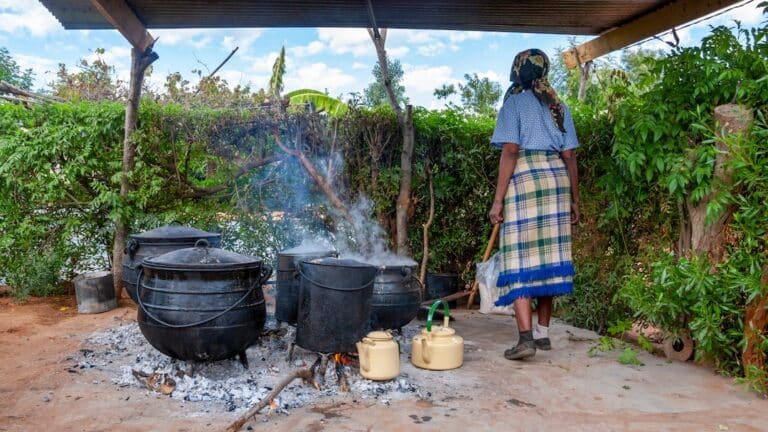Applications Open for 2026 David Leuschen Global Energy Fellows Program
The Center on Global Energy Policy (CGEP) at Columbia University SIPA is excited to announce an open call for applications for the 2026 David Leuschen Global Energy Fellows...
Current Access Level “I” – ID Only: CUID holders, alumni, and approved guests only
Insights from the Center on Global Energy Policy
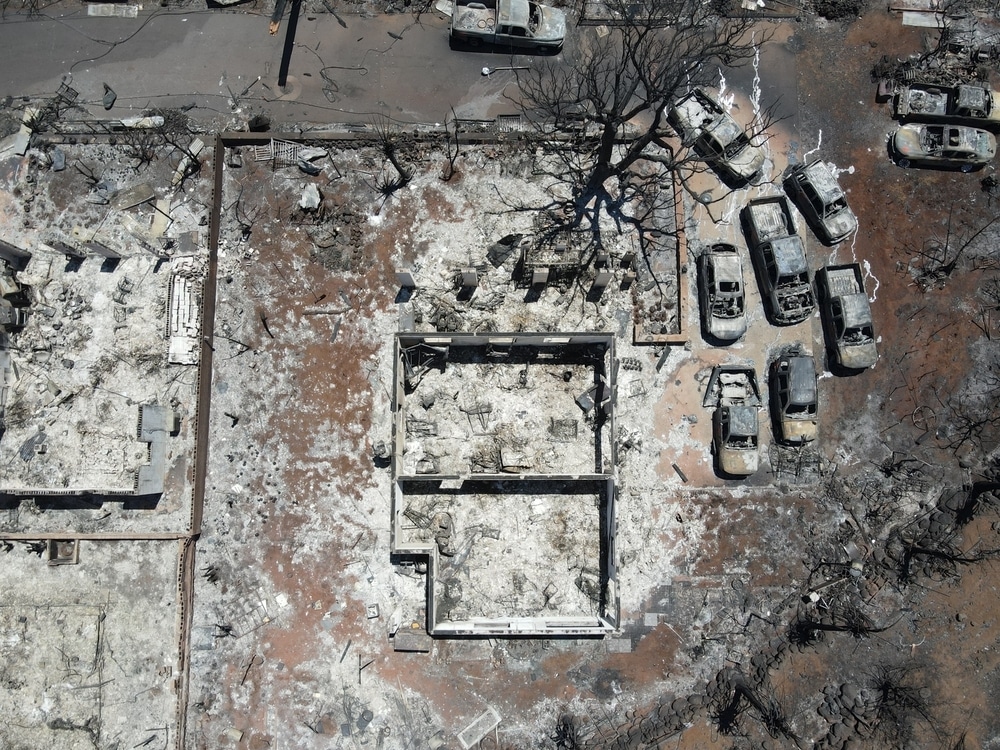
This Energy Explained post represents the research and views of the author. It does not necessarily represent the views of the Center on Global Energy Policy. The piece may be subject to further revision. Contributions to SIPA for the benefit of CGEP are general use gifts, which gives the Center discretion in how it allocates these funds. Rare cases of sponsored projects are clearly indicated.
For a full list of financial supporters of the Center on Global Energy Policy at Columbia University SIPA, please visit our website at Our Partners. See below a list of members that are currently in CGEP’s Visionary Circle. This list is updated periodically.
This summer’s wildfires on Maui are the largest environmental disaster in Hawaiian history. One of them, the deadliest[1] wildfire in the United States since 1918, caused near-total destruction of the historic town of Lahaina, leading to a mass displacement of the local population and widespread power outages. The fires ignited across the island of 160,000 people in early August, with damaged power lines[2] likely one of the immediate causes. Extreme winds from Hurricane Dora and drought conditions,[3] worsened by climate change,[4] accelerated the fire’s spread. In this Q&A, the authors analyze the impact of the ongoing Maui wildfires on the power grid and local communities and propose solutions for building a climate-resilient grid.
Vulnerable power grids increase the risk of wildfires. Deteriorating components and poorly maintained, aged infrastructure can spark wildfires, as was the case in the Camp fire in California in 2018. While the official investigation into the causes of Maui’s recent fires is still ongoing, it is likely[5] that extreme winds brought down power lines and ignited fires in the area around Lahaina, and across Maui more broadly. The necessity of upgrading Hawaii’s electricity had been identified long before the catastrophic events of early August, including the need to replace aging pylons on Maui.[6] There are questions[7] about whether Hawaiian Electric could have established a power shut-off program in consultation with local communities and authorities in advance, potentially powering down with less damaging consequences.
Wildfires have the potential to impact the power grid in multiple ways, either through direct physical damage to utility infrastructure, such as downing of power lines, transformers and substations, or via necessary preventative power shutoffs, as in California’s Public Safety Power Shutoff (PSPS) program.[8] Alongside loss of business activity, wildfires increase[9] costs to all power sector stakeholders, from investor-owned utilities to state and local governments, to ratepayers and taxpayers. Even power outages[10] unaccompanied by the tragic wildfires can have severe impacts on the health and wellbeing of the local community, as well as negative economic repercussions.
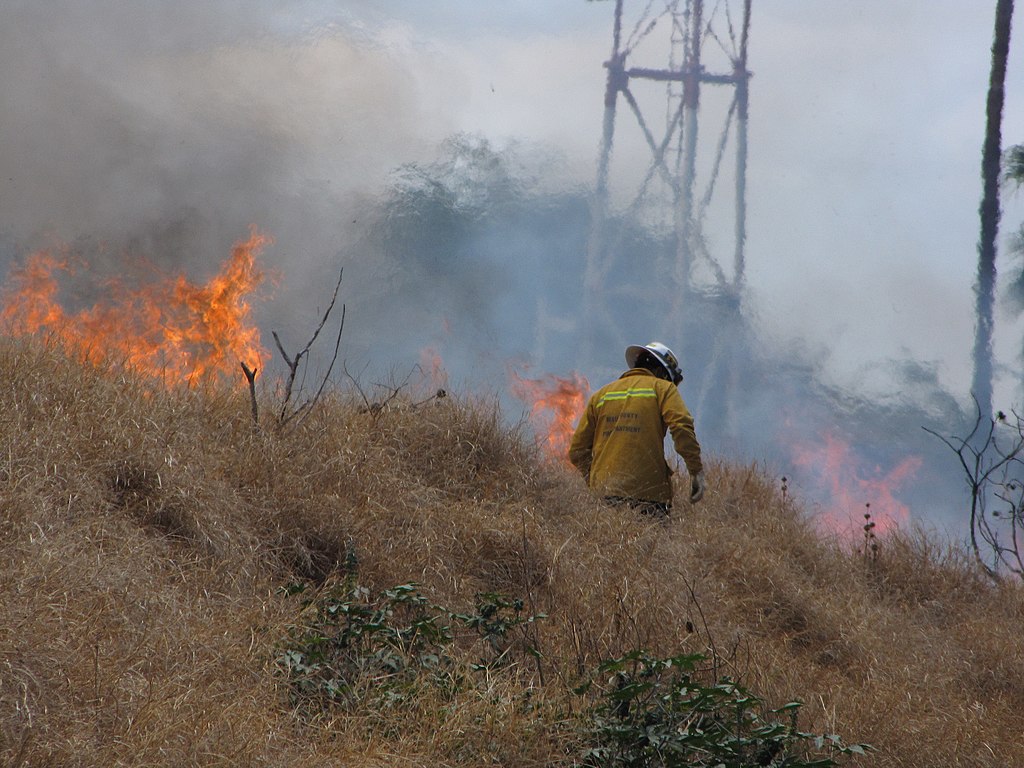
Battling a brush fire in Maui in 2009. (Forest and Kim Starr/Wikimedia Commons)
The cost of rebuilding around 2,200 structures affected in Maui is currently estimated to be more than $5 billion.[11] Island communities face a complex and distinct array of challenges when rebuilding after environmental disasters. Timely deployment of aid and resources is trickier due to islands’ geographic isolation, leaving them particularly vulnerable to any disruptions. With limited resources and infrastructure, these communities have to grapple with the Herculean task of securing necessary materials, labor, and funding for reconstruction efforts.
Some parallels can be drawn between the Maui disaster and Puerto Rico in the aftermath of Hurricane Maria[12] in September 2017. Occurring just a few weeks after Hurricane Irma, which left almost two-thirds of the population without electricity, Maria completely destroyed the island’s power grid and hampered access to clean water. The Jones Act, which requires goods transported between US ports to be carried on US-built, -owned, and -crewed vessels, impeded the rapid influx of aid to Puerto Rico at the beginning, until the Trump administration temporarily waived[13] the law. The Puerto Rican grid has still not modernized.[14] Puerto Ricans still lack affordable and reliable access to power, paying twice as much or more[15] for electricity compared to mainland Americans.
For policymakers envisioning a climate-resilient grid for island communities, taking a multifaceted approach—one that accounts for the unique challenges posed by islands’ geographical isolation and vulnerability to climate-induced disasters—is critical. Some measures that will help island communities safeguard against the increasing threats of climate change and ensure sustainable power supply include:
In the immediate aftermath of an environmental disaster, the absence of reliable electrical power puts increased strain on the impacted communities. This is felt most acutely by survivors who suffered injury due to the disaster, or those with pre-existing health conditions. Separating the health impacts of post-disaster power loss from those endured as a direct result of the primary disaster is sometimes challenging, particularly as data collection during moments of crisis is difficult. However, epidemiological studies[22] on blackouts have found increased risks of major depressive disorder, PTSD, and pregnancy complications, as well as difficulty for those who rely on medical devices that run on electricity.
Examples of the immediate negative mental health impact of the Maui disaster have already begun to emerge, caused by the experience of huge personal loss[23] and the trauma of the event.[24] In the medium term, access to clean water and proper sanitation can be compromised, amplifying health risks. Overcoming these secondary challenges requires preparedness at the individual and community levels, along with measures to ensure healthcare facilities remain operational during blackouts.
Environmental disasters, including wildfires, often impose unequal burdens on people of color and indigenous communities, exacerbating existing socio-economic and environmental factors. Limited access to resources including financial means, transportation, and insurance accentuates vulnerability, further complicating post-disaster recovery efforts. Additionally, displacement due to disasters has more severe consequences if livelihoods are place-based, as is the case in Hawaii, where the majority[25] of residents depend on agriculture and tourism. White collar and flexible remote jobs tend to be held by white populations and people with economic mobility; income is therefore less affected by long term geographic displacement. Capacities for informal and mutual aid may be more markedly diminished among Native Hawaiians, for whom poverty levels are higher[26] than among white Hawaiians, if the majority of the supportive social network are also suffering from the same crisis.
Furthermore, people living in poverty, which occurs at higher rates among Black, Indigenous, and people of color (BIPOC), experience more adverse health conditions. Smoke and air quality concerns exacerbated during wildfires heighten prevailing health disparities among marginalized populations, compounding the impact.
CGEP’s Visionary Circle
Corporate Partnerships
Occidental Petroleum Corporation
Tellurian Inc
Foundations and Individual Donors
Anonymous
Anonymous
the bedari collective
Jay Bernstein
Breakthrough Energy LLC
Children’s Investment Fund Foundation (CIFF)
Arjun Murti
Ray Rothrock
Kimberly and Scott Sheffield
[1] https://www.axios.com/2023/08/13/maui-hawaii-fire-deaths
[2] https://www.washingtonpost.com/climate-environment/2023/08/15/maui-fires-power-line-cause/
[3] https://droughtmonitor.unl.edu/CurrentMap.aspx
[4] https://www.usgs.gov/science/science-explorer/climate/droughts-and-climate-change
[5] https://www.hawaiinewsnow.com/2023/08/18/new-data-reveals-dozens-power-grid-malfunctions-leading-up-maui-wildfires/
[6] https://www.nytimes.com/2023/08/19/business/energy-environment/hawaiian-electric-maui-wildfire-climate-change.html
[7] https://apnews.com/article/maui-hawaii-wildfires-electric-utility-c3513c2f8e451df6dab2e59a6c2f670d
[8] https://www.cpuc.ca.gov/psps/
[9] https://www.energypolicy.columbia.edu/publications/out-control-impact-wildfires-our-power-sector-and-environment/
[10] https://www.ncbi.nlm.nih.gov/pmc/articles/PMC7749027/
[11] https://www.fitchratings.com/research/us-public-finance/mauis-strong-budget-control-buffers-credit-against-wildfires-impact-23-08-2023
[12] https://www.climate.gov/news-features/understanding-climate/hurricane-marias-devastation-puerto-rico
[13] https://www.nytimes.com/2017/09/28/us/jones-act-waived.html
[14] https://www.washingtonpost.com/nation/2022/09/19/puerto-rico-blackout-hurricane-fiona
[15] https://www.eia.gov/state/print.php?sid=RQ
[16] https://www.fire.ca.gov/our-impact/remembering-the-camp-fire
[17] https://ncdp.columbia.edu/library/mapsmapping-projects/us-natural-hazards-index/
[18] https://www.pge.com/en_US/residential/customer-service/other-services/electric-undergrounding-program/electric-undergrounding-program.page
[19] https://www.mdpi.com/2079-9292/11/24/4206
[20] https://www.ornl.gov/news/researchers-bring-more-reliable-electricity-puerto-rican-microgrids
[21] https://www.scientificamerican.com/article/as-hawaii-aims-for-100-renewable-energy-other-states-watching-closely/
[22] https://www.ncbi.nlm.nih.gov/pmc/articles/PMC7749027/
[23] https://www.npr.org/2023/08/21/1194823959/maui-wildfires-mental-health-toll
[24] https://apnews.com/article/hawaii-wildfires-maui-lahaina-mental-health-a7ed87701c314224bd4b20f8575b4608
[25] https://dbedt.hawaii.gov/economic/databook/
[26]https://minorityhealth.hhs.gov/omh/browse.aspx?lvl=3&lvlid=65
World leaders are meeting in New York this month at the request of the United Nations Secretary-General António Guterres to discuss the state of global ambition on climate change.

President Donald Trump has made energy a clear focus for his second term in the White House. Having campaigned on an “America First” platform that highlighted domestic fossil-fuel growth, the reversal of climate policies and clean energy incentives advanced by the Biden administration, and substantial tariffs on key US trading partners, he declared an “energy emergency” on his first day in office.

AI’s growing power demand has received enormous attention in recent months. In many places, the lack of power supplies is an important constraint on the growth of data centers to train and run AI models.
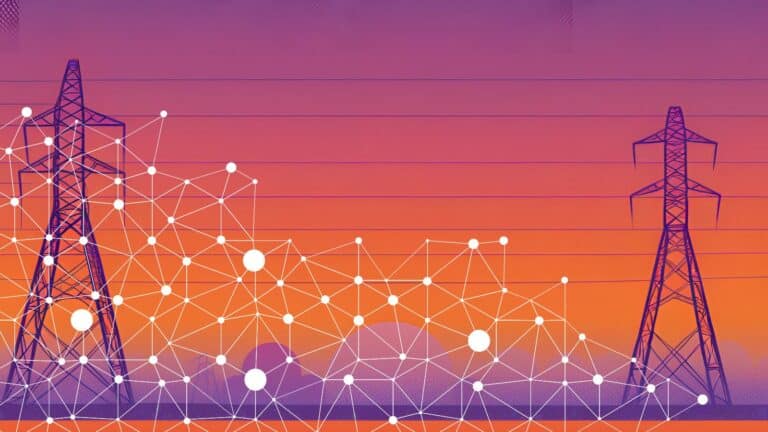
Kenya and South Africa have recently started moving toward an open access regime in their electricity sectors, while the US and India have been on this path for over two decades.
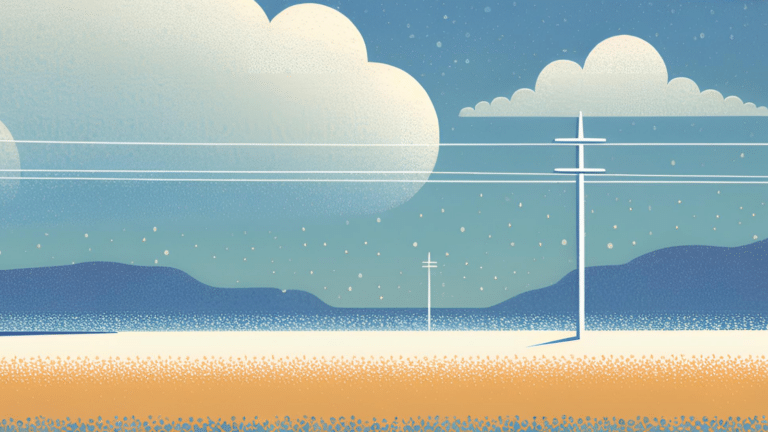
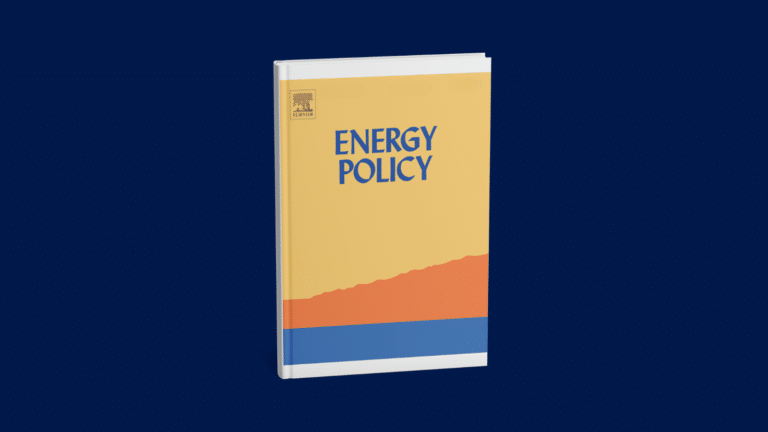
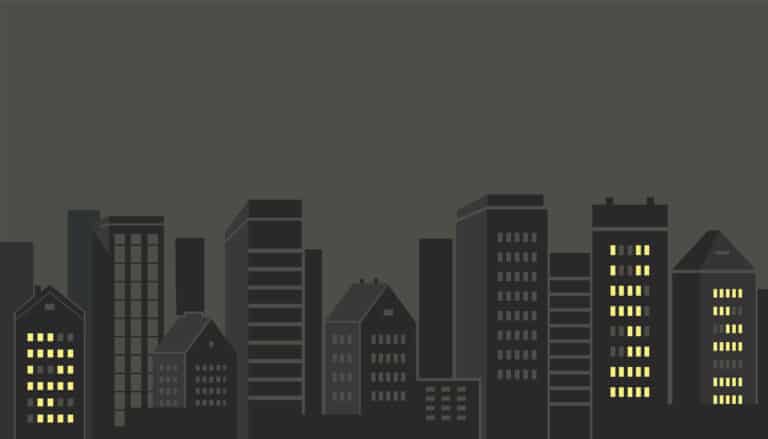
While tens of millions of people work in formal energy jobs around the world, another group that comprises a massive and key labor segment in this sector is often overlooked: women and girls producing biomass
